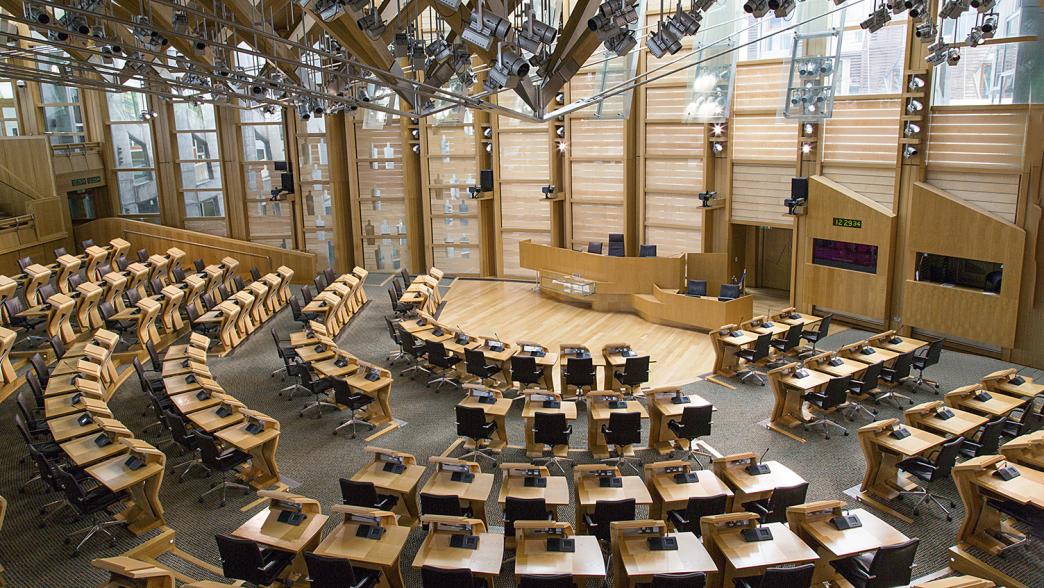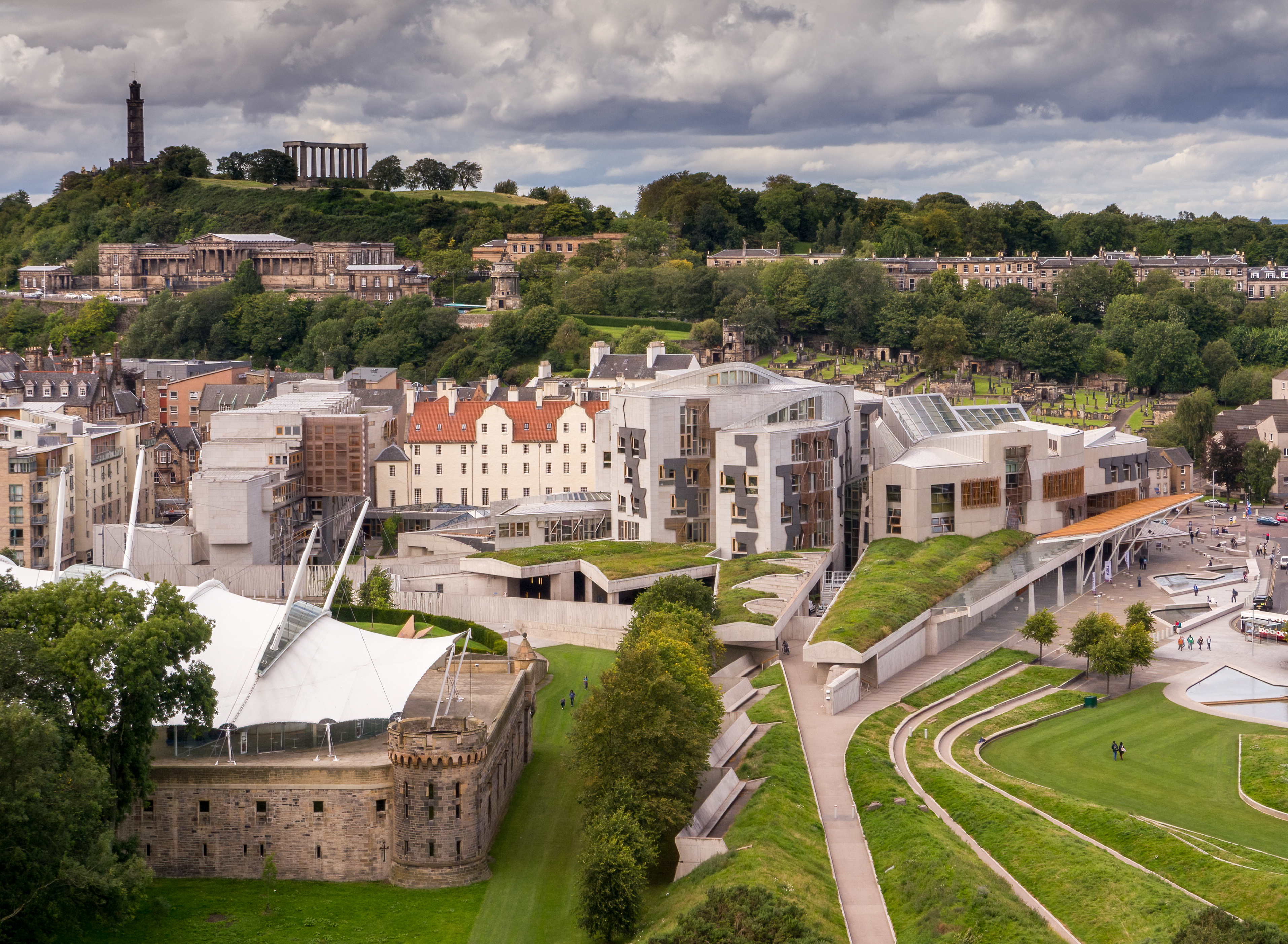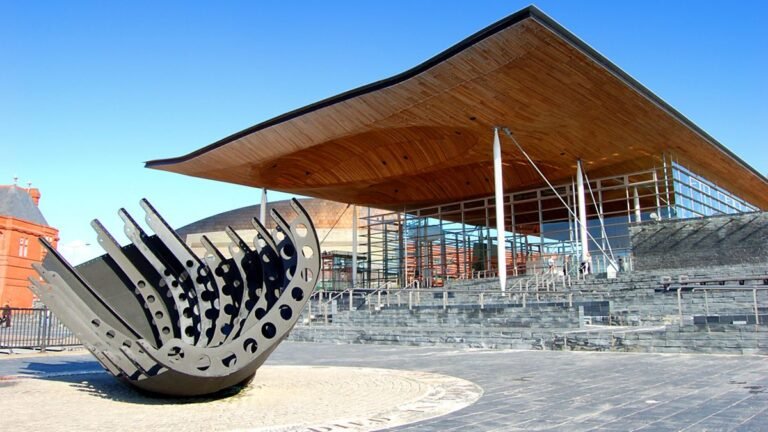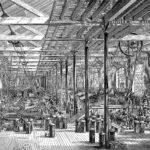The Scottish Parliament is the heart of Scotland’s democracy. It represents the people and makes crucial decisions.
Nestled in Edinburgh, this institution has been pivotal in shaping the nation’s future since its establishment in 1999. It stands as a symbol of self-governance and legislative power, addressing issues unique to Scotland. From healthcare to education, the Parliament crafts policies that impact daily life.
As you delve into its workings, you’ll discover the complexities of governance and the spirited debates that drive change. Understanding the Scottish Parliament means grasping the aspirations and challenges of a nation. So, join us on this journey to explore the roles, responsibilities, and the vibrant political landscape of Scotland’s own legislative body.

Credit: www.instituteforgovernment.org.uk
Origins Of Scottish Parliament
The Scottish Parliament has a rich history. It is deeply rooted in Scotland’s past. Its origins trace back centuries, reflecting the nation’s evolving identity. The Parliament has played a crucial role in shaping Scottish society. Let’s explore its beginnings and significance.
Medieval Beginnings
The story of the Scottish Parliament begins in the medieval period. It started as gatherings of nobles and clergy. They met to discuss matters of the realm. These meetings were not formal parliaments. But they laid the groundwork for future assemblies. Over time, these gatherings became more structured. By the 13th century, the term “Parliament” was used. This marked the formalization of a national assembly.
Role In Scottish Society
The Scottish Parliament has always been more than a political body. It served as a forum for addressing societal issues. During medieval times, it passed laws and resolved disputes. It also played a role in taxation and justice. The Parliament reflected the needs and concerns of the people. It evolved with changing times, adapting to new challenges. Today, it remains a cornerstone of Scottish democracy. Its historical roots continue to influence its modern functions.
Union With England
The Union with England in 1707 marked a pivotal moment in Scottish history. Two distinct nations merged, forming the Kingdom of Great Britain. This union had profound implications for governance and identity.
Treaty Of Union 1707
The Treaty of Union was the agreement that united Scotland and England. Scottish and English Parliaments negotiated this treaty. It included terms that merged the two countries under one crown. The treaty aimed for political stability and economic growth. Many Scots were concerned about losing their autonomy. Debates over the treaty were intense and emotional. Despite challenges, the treaty became law on May 1, 1707. Scotland retained its legal system, but shared governance with England.
Impact On Governance
The union changed how Scotland was governed. Scottish Parliament dissolved and joined the British Parliament. Decisions affecting Scotland were made in London. Some Scots felt their voice was diminished. The union brought new political opportunities. It opened doors to participate in broader British politics. Economic policies were aligned with English interests. Governance shifted towards a centralized system. Many Scots adjusted to these changes over time.
Devolution Movement
The Scottish Parliament emerged from a strong devolution movement. This movement sought to shift powers from the UK Parliament to Scotland. It aimed to give Scotland control over its affairs. The journey wasn’t easy. It took decades of political debates and public demands. Devolution transformed governance in Scotland. It empowered Scottish people to make decisions that reflect their needs.
Late 20th Century Push
In the late 20th century, the push for devolution gained momentum. Many Scots desired more control over their land. They felt decisions made in London didn’t always benefit Scotland. Political groups rallied for change. They believed a Scottish Parliament could address local issues better. This era marked a critical turning point. It paved the way for new possibilities.
Referendum Of 1997
1997 was a landmark year for Scotland. A referendum offered Scots a choice. The question: should Scotland have its own Parliament? The campaign saw passionate arguments from both sides. Many believed in greater autonomy. They wanted decisions made closer to home. The referendum results were clear. Scots overwhelmingly voted for devolution. This decision led to the establishment of the Scottish Parliament. It marked a new chapter in Scottish governance.

Credit: en.wikipedia.org
Establishment Of Holyrood
The establishment of Holyrood marked a significant moment in Scotland’s political history, symbolizing a new era of self-governance. Nestled in Edinburgh, the Scottish Parliament is a testament to Scotland’s rich heritage and its forward-thinking approach to democracy. The journey to this establishment was driven by a desire for representation and autonomy, setting the stage for transformative political change.
Opening In 1999
In 1999, the Scottish Parliament at Holyrood opened its doors for the first time, ushering in a fresh chapter for Scottish politics. This was not just the birth of a building but the awakening of a new political era. You might recall how exhilarating it was to witness the first debates and decisions made by a parliament dedicated to addressing local issues. It was a moment of pride and anticipation, as Scots looked forward to shaping their future more directly.
Architectural Significance
The architectural design of Holyrood is both innovative and reflective of Scottish identity. Designed by Catalan architect Enric Miralles, the building seamlessly blends with its surroundings, echoing the natural beauty of Scotland. Have you ever stood before it, marveling at how the structure captures the essence of Scottish landscapes? It’s not just a building; it’s a narrative of Scotland’s past and aspirations.
Every element, from the sweeping curves to the thoughtful use of local materials, tells a story. It’s fascinating how the architecture invites you to ponder Scotland’s place in the world, both historically and in modern times. How does the architecture of Holyrood inspire you to think about Scotland’s identity and future?
Holyrood is more than just an assembly hall; it’s a symbol of Scotland’s commitment to democracy and self-determination. As you explore its history and architecture, consider what this establishment means for Scotland today. What does Holyrood’s presence say about Scotland’s vision for the future?
Structure And Function
The Scottish Parliament has 129 members who create laws and discuss important issues. It meets in Edinburgh, where members debate and make decisions for Scotland. The parliament’s structure supports diverse voices and effective governance.
The Scottish Parliament stands as a beacon of democracy, inviting citizens to engage with its dynamic structure and essential functions. This institution isn’t just about debates and laws; it’s about how these processes are organized and executed. Understanding its structure helps you appreciate its efficiency and role in shaping Scotland’s future.
Roles Of Members
In the Scottish Parliament, Members of the Scottish Parliament (MSPs) play crucial roles. Each MSP represents a specific region or constituency, bringing local issues to the national stage. They debate, propose new laws, and scrutinize government actions.
Have you ever wondered how your local concerns reach the national level? MSPs bridge that gap by voicing your community’s needs and aspirations. This local representation ensures that diverse perspectives shape the country’s legislative agenda.
Committee System
The committee system is the backbone of the Scottish Parliament, ensuring detailed examination of legislative proposals. Committees are made up of MSPs who focus on specific areas like health, education, and the environment. They scrutinize bills, hold inquiries, and engage with the public to gather evidence.
Imagine a committee as a small team dedicated to diving deep into issues that affect your daily life. This system allows for thorough analysis and informed decision-making, ensuring laws are well-crafted and effective. It’s a platform where your voice can be heard through consultations and public evidence sessions.
Committees also hold the government accountable, ensuring transparency and fairness. They ask tough questions and demand answers, safeguarding democratic principles. This rigorous oversight is vital for maintaining trust in the political system.
Do you feel your voice matters in the democratic process? The structure and function of the Scottish Parliament offer multiple avenues for participation, ensuring your opinions and needs are considered in shaping the nation’s future.

Credit: www.layersoflondon.org
Legislative Achievements
Scottish Parliament’s legislative achievements reflect its commitment to public welfare. Laws on education, health, and justice showcase its dedication. These efforts aim to improve the lives of Scottish citizens.
The Scottish Parliament has been a beacon of legislative innovation since its establishment in 1999. Its legislative achievements have profoundly shaped Scotland’s social, economic, and environmental landscape. From groundbreaking policies to impactful reforms, the Parliament’s work has been both ambitious and transformative.
Key Policies Passed
The Scottish Parliament has passed several key policies that have had a lasting impact on the nation. The Smoking, Health and Social Care (Scotland) Act 2005 is a milestone, banning smoking in public places and dramatically improving public health. Another notable achievement is the Climate Change (Scotland) Act 2009, which set ambitious targets for reducing greenhouse gas emissions, positioning Scotland as a leader in environmental responsibility.
An important focus has also been on education, with policies like the Education (Additional Support for Learning) (Scotland) Act 2004. This policy ensures that all children receive the support they need for a successful education. Have you noticed how these policies improve daily life in Scotland?
Impact On Scottish Life
The impact of these legislative achievements on Scottish life is significant. The smoking ban, for instance, has led to cleaner air and healthier public spaces, which you might appreciate when visiting a local café or pub.
Scotland’s commitment to climate change has fostered a culture of sustainability, encouraging community initiatives and greener lifestyles. This shift is evident in how you might see an increase in electric vehicles or community gardens in your area.
In education, the focus on additional support has enabled more inclusive learning environments. This ensures that every child, regardless of their challenges, can thrive and reach their potential. How has this emphasis on education made a difference in your community?
These legislative achievements demonstrate the Scottish Parliament’s dedication to improving the quality of life for its citizens. What other policies do you think would further enhance life in Scotland?
Current Political Landscape
The current political landscape of the Scottish Parliament is as dynamic as ever. It’s a fascinating blend of tradition and modernity, with a vibrant mix of political parties and emerging issues. Understanding this landscape offers a window into Scotland’s future.
Major Parties
The Scottish National Party (SNP) holds a significant presence in the Parliament. They focus on Scottish independence and progressive policies. The SNP’s leadership has been pivotal in shaping Scotland’s political direction.
The Scottish Labour Party remains a key player. They aim to address social inequalities and prioritize public services. Their approach often contrasts with the SNP’s nationalist agenda.
The Scottish Conservatives emphasize unionism and economic growth. They serve as the main opposition to the SNP. Their policies often appeal to those favoring stability over change.
Other parties like the Scottish Greens and the Liberal Democrats also contribute to the political discourse. They bring diverse perspectives and often influence coalition decisions. Their presence ensures a wide range of voices in parliamentary debates.
Contemporary Issues
Independence remains a hot topic. The debate over Scotland’s future within the UK is intense. It raises questions about identity and sovereignty.
Climate change is another pressing issue. Scotland’s commitment to renewable energy is commendable. Yet, achieving net-zero emissions is a challenge that requires innovative solutions.
Economic recovery post-COVID-19 is crucial. The pandemic impacted jobs and industries. How can Scotland rebuild a resilient economy?
Social equality is a persistent concern. Efforts to reduce poverty and improve education are ongoing. Are these measures enough to close the gap?
As you consider these issues, think about their impact on everyday life in Scotland. How do these political dynamics influence your own views? The Scottish Parliament’s decisions today shape not just the nation, but your future as well.
Future Of Scottish Parliament
Scottish Parliament holds potential for change, focusing on autonomy and governance. Future discussions may shape its role in UK politics. Independence aspirations remain a key topic.
The future of the Scottish Parliament is a topic of considerable interest and speculation. As Scotland navigates the dynamic political landscape, questions about its autonomy and governance come to the fore. What changes could lie ahead for this iconic institution?
Independence Debate
The independence debate continues to be a heated topic in Scotland. Many Scots feel a strong sense of national identity and question whether full independence could bring greater prosperity and control over domestic policies. Imagine waking up to a Scotland that makes its own decisions on international matters and economic strategies. Would this lead to a more prosperous nation?
However, others worry about the economic and political implications of breaking away from the United Kingdom. The debate often centers on immediate practical concerns, such as currency stability and trade relationships. It’s a complex issue with passionate voices on both sides.
Potential Reforms
The Scottish Parliament is also looking at potential reforms that could reshape its future. These reforms may include changes to how laws are made or how representatives are elected. What if the voting age was lowered to 16, allowing younger voices a say in shaping Scotland’s future?
There’s also discussion about enhancing the transparency and accountability of parliamentary processes. Imagine a system where you could track every decision and policy development in real-time. Would such transparency lead to greater public trust in government?
Reforms could also focus on increasing devolved powers, giving Scotland more control over areas like taxation and welfare. These changes could empower Scotland to tailor solutions more closely aligned with local needs and priorities.
The future of the Scottish Parliament is not just a political topic—it’s a personal one. Whether you’re a resident of Scotland or someone interested in its political journey, the decisions made today could shape the Scotland of tomorrow. What changes do you think would most benefit the nation?
FAQs
Is Scottish Parliament Worth Visiting?
Yes, the Scottish Parliament is worth visiting. It offers unique architecture and insightful guided tours. Visitors can explore its modern design and learn about Scotland’s political history. Located in Edinburgh, it’s easily accessible and surrounded by cultural attractions. A visit provides a deeper understanding of Scottish governance and heritage.
What Is The Difference Between The Scottish Parliament And The Scottish Government?
The Scottish Parliament creates laws and debates national issues. The Scottish Government enacts policies and manages public services. Parliament holds the government accountable, while the government implements legislative decisions. Parliament members are elected, whereas the government is formed by the party with majority support in Parliament.
Which Party Is In Power In Scotland?
The Scottish National Party (SNP) holds power in Scotland. Led by Humza Yousaf, SNP focuses on independence. Their governance influences Scottish policies. The SNP has been in power since 2007, driving major political decisions. Their leadership reflects the desire for self-governance and distinct national identity within the UK framework.
Is Scotland Ruled By The British Parliament?
Scotland has its own Parliament for domestic issues. The British Parliament governs matters like defense and foreign policy. Scottish Parliament handles areas like health and education. Scotland has devolved powers, but not full independence from the UK Parliament. Authority is shared between both parliaments for different matters.
Conclusion
The Scottish Parliament stands as a symbol of democracy. Its architecture is unique and inspiring. Decisions made here impact all of Scotland’s citizens. Visitors can explore its history and importance. Understanding its role helps appreciate Scottish governance. Every corner tells a story of progress and change.
Its debates shape the future, ensuring voices are heard. The Parliament continues to evolve, reflecting Scotland’s diverse society. It’s not just a building. It’s the heart of Scottish politics. A visit offers insight into the nation’s democratic journey. Discover the essence of Scotland through its Parliament.








